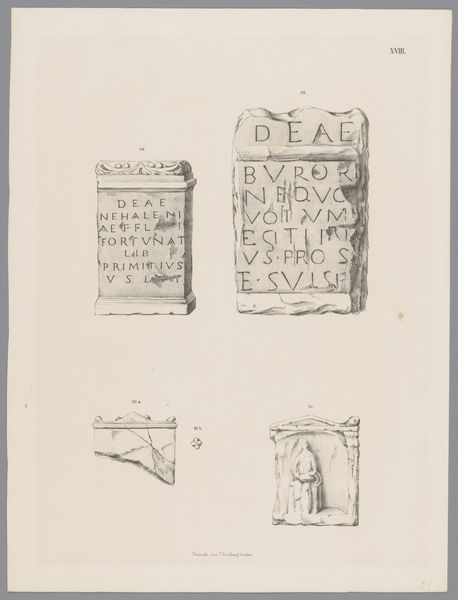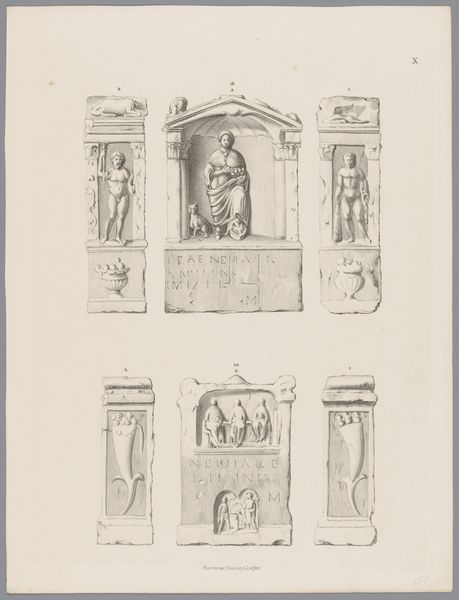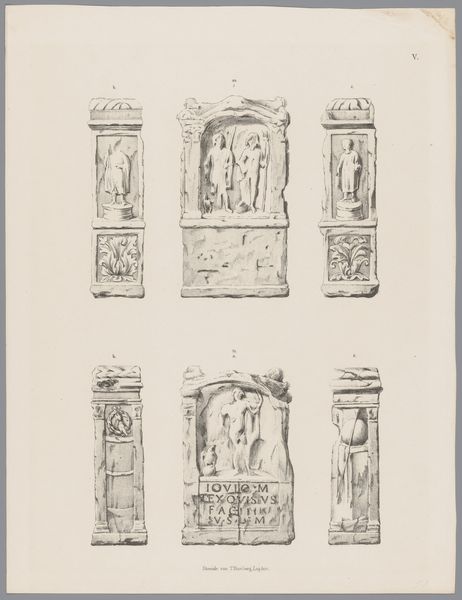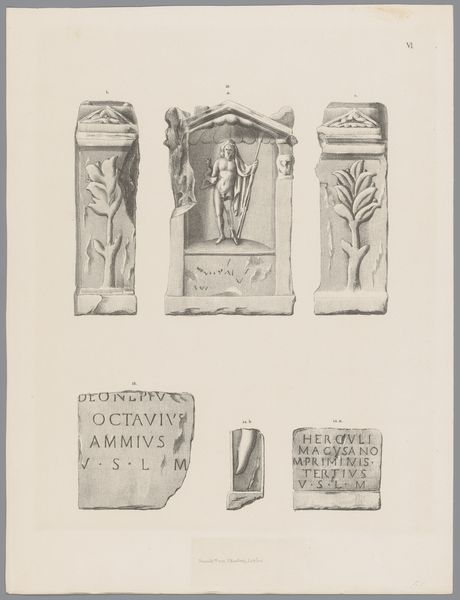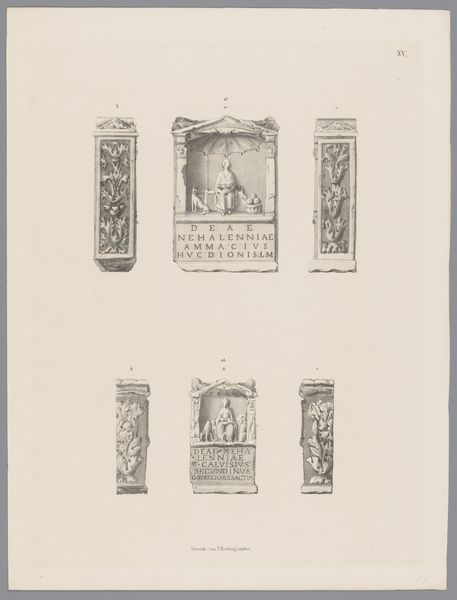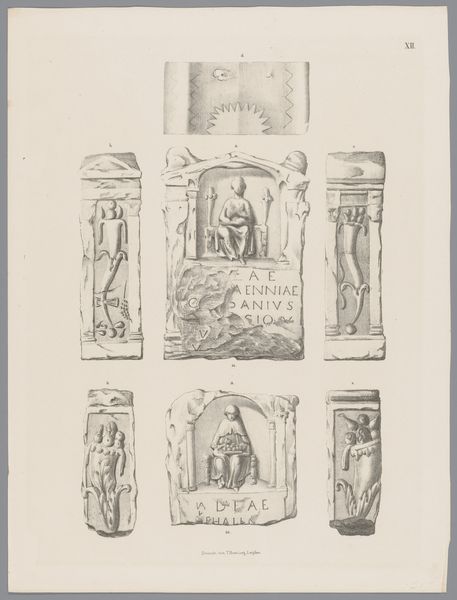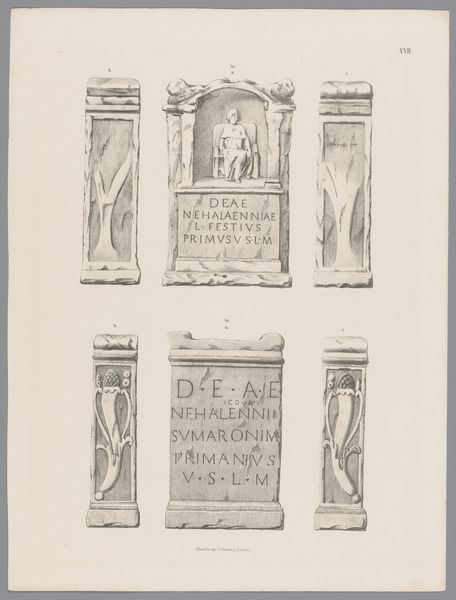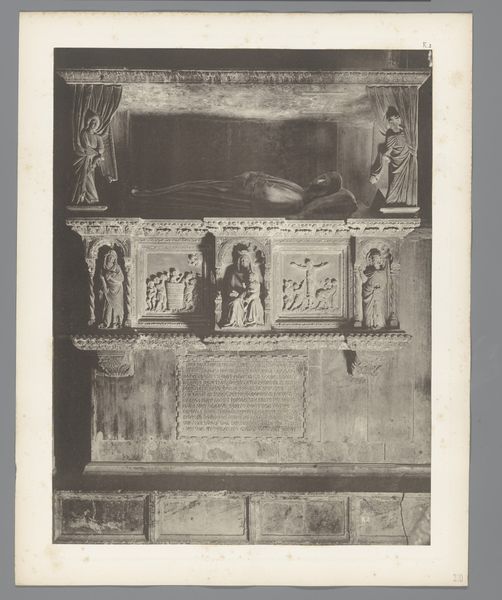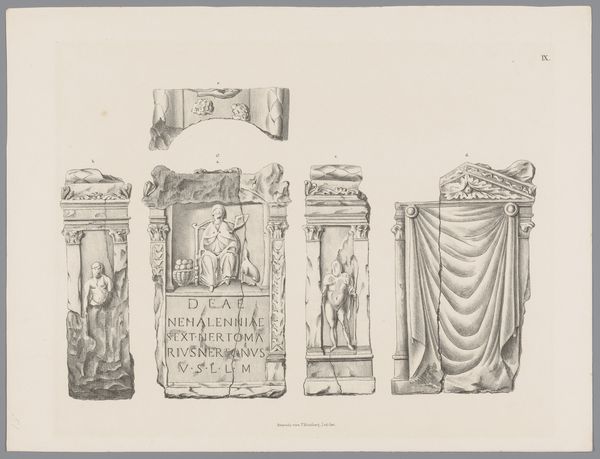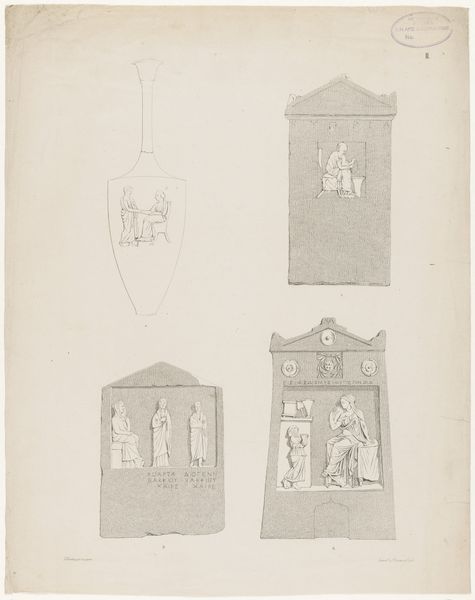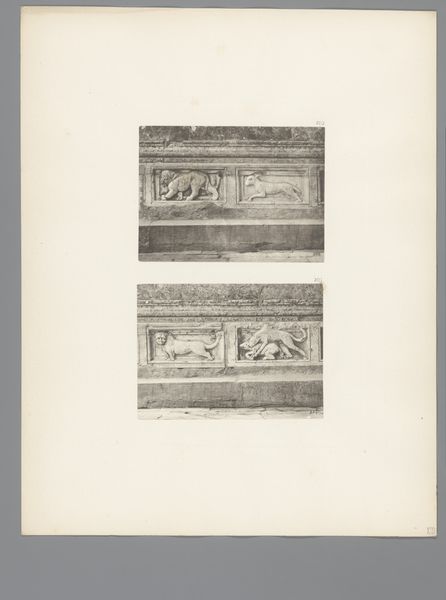
print, paper, engraving
# print
#
paper
#
ancient-mediterranean
#
history-painting
#
academic-art
#
engraving
Dimensions: height 360 mm, width 270 mm
Copyright: Rijks Museum: Open Domain
Tiemen Hooiberg made this print, titled "Nehalennia-altaar en fragment met tekst", in the 19th century. It depicts archaeological fragments of altars dedicated to the goddess Nehalennia. These altars are fascinating because they tell us about the cultural exchange that took place in the Netherlands during the Roman period. Nehalennia was a local goddess, but the people who dedicated these altars were Roman citizens involved in trade between the Netherlands and Britain. The inscriptions, like the one that reads “DEAE NEHALENNIAE OB MERCES RECTE CONSERVATAS,” reveal the economic concerns of these individuals, who sought Nehalennia’s protection for their goods. The altars also point to the Roman Empire's policy of religious tolerance, as local gods were often assimilated into the Roman pantheon. As historians, we can delve deeper by studying archaeological reports and Roman trade records to better understand the social dynamics at play during this period. Art like this, is a window into a complex past, reflecting the interplay of local traditions and imperial power.
Comments
No comments
Be the first to comment and join the conversation on the ultimate creative platform.

